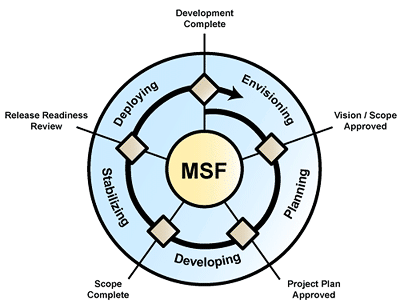After a need for change has been recognized and the change initiator has raised a request for change (RFC), the change is categorized and prioritized based on the initial information available. As a result, the path for the change is defined, and the authorization process continues from this point up to the Change Initiation Review. If the change is authorized, it continues into development. If not, it is returned to the change initiator for more information and rework before it is resubmitted.
Detailed processes for the change management steps leading up to the Change Initiation Review and the approval process are found in the Microsoft Operations Framework (MOF) Web site.
The change manager and change initiator are the primary participants in this Change Initiation Review discussion, but formalized discussion can also include representatives of other interested groups. This body is named the change advisory board (CAB) in the Change Management service management function (SMF). Depending on the nature and potential impact of the change and established policies, approval for change initiation might require discussion at any of several levels:
- Unilateral authorization by the change manager.
- Approval by the full representation in the CAB.
- Escalation to a CAB emergency committee (CAB/EC) or IT board
meeting.
- Review and validation by the user community.
These different levels of authorization are defined in the Change Management SMF. The Change Initiation Review operations management review (OMR) guidance discussed here is concerned with the best way to perform and utilize the review process for maximum benefit to the IT environment and to the organization in general.
MSF and MOF
As stated previously, the Change Initiation Review is a key integration point between the Microsoft Solutions Framework (MSF) and the Microsoft Operations Framework (MOF). It corresponds with the Project Plans Approved Milestone in the MSF Process Model and occurs at the end of the MSF Planning Phase.
